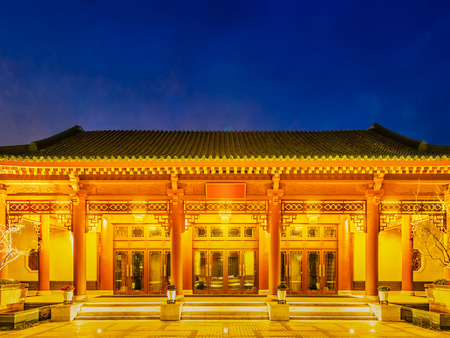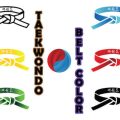1. Origins and Evolution of Feng Shui
Feng Shui, which literally means “wind” and “water” in Chinese, has a fascinating history that dates back thousands of years. Its origins can be traced to ancient China, where early civilizations observed the natural environment to determine the best locations for homes, farms, and burial sites. The belief was simple: harmony with nature brings prosperity, health, and happiness.
Early Beginnings
The earliest records of Feng Shui date as far back as 4000 BCE. In those times, people relied on their observations of wind patterns, water sources, mountains, and sunlight to make decisions about where to build their villages. This practice was rooted in the idea that the land’s energy—known as “Qi”—could influence people’s well-being.
Development Through Dynasties
As Chinese society evolved, so did Feng Shui. Different dynasties contributed their own philosophies and techniques:
| Dynasty | Key Developments |
|---|---|
| Zhou (1046–256 BCE) | First written texts on Feng Shui; emphasis on aligning buildings with stars and compass directions. |
| Han (206 BCE–220 CE) | Incorporated Taoist and Confucian ideas; focus on harmony between humans and nature. |
| Tang & Song (618–1279 CE) | Refined geomancy techniques; introduction of the Luo Pan (Feng Shui compass). |
| Ming & Qing (1368–1912 CE) | Brought together classical theories; popularized use in architecture and city planning. |
Key Historical Milestones
- The Classic Texts: Important writings like the “Book of Burial” laid out early Feng Shui principles.
- The Invention of the Luo Pan: This special compass helped practitioners measure precise directions for optimal energy flow.
- Integration into Daily Life: Over centuries, Feng Shui became a key part of Chinese architecture—from imperial palaces to humble homes.
Influence Beyond China
As trade routes opened up, especially along the Silk Road, elements of Feng Shui spread to neighboring countries like Korea and Japan. In recent decades, its influence has extended to America, where people have adapted traditional concepts to modern lifestyles—seeking balance in homes and workplaces alike.
2. Core Principles of Feng Shui
Feng Shui, which means “wind and water” in Chinese, is built on several core principles that are both ancient and surprisingly relevant to modern American lifestyles. Understanding these concepts can help anyone create spaces that feel more comfortable, balanced, and supportive of personal well-being. Let’s break down the essential ideas and tools of Feng Shui.
Qi: The Flow of Energy
At the heart of Feng Shui is Qi (pronounced “chee”), the invisible energy or life force believed to flow through everything. In a home or office, smooth and gentle movement of Qi is considered vital for health, happiness, and success. Clutter, sharp angles, or blocked pathways can disrupt Qi, making a space feel uncomfortable or stagnant.
The Five Elements
Feng Shui uses five natural elements—Wood, Fire, Earth, Metal, and Water—to describe interactions within a space. Each element represents different qualities and can be introduced through colors, shapes, or materials to create harmony.
| Element | Associated Color | Symbolic Shape | Common Materials/Examples |
|---|---|---|---|
| Wood | Green/Brown | Rectangular/Columnar | Plants, Wooden Furniture |
| Fire | Red/Orange | Triangular/Pointed | Candles, Lighting, Sunlight |
| Earth | Yellow/Beige | Square/Flat | Ceramics, Stones, Bricks |
| Metal | White/Grey | Circular/Spherical | Sculptures, Frames, Appliances |
| Water | Blue/Black | Wavy/Curved | Aquariums, Mirrors, Fountains |
The Bagua Map: Your Energy Blueprint
The Bagua Map is a unique tool in Feng Shui that divides a space into nine zones. Each zone connects to an important part of life—like relationships, health, wealth, or creativity. By overlaying the Bagua map onto your home’s floor plan (with the main entrance aligned with the bottom edge), you can identify which areas support specific goals and adjust them for better balance.
| Bagua Area (English) | Main Life Aspect Supported |
|---|---|
| Wealth & Prosperity (Back Left) | Abundance & Finances |
| Fame & Reputation (Back Center) | Status & Recognition |
| Love & Relationships (Back Right) | Romance & Partnerships |
| Family & Health (Middle Left) | Family Bonds & Well-being |
| Center (Heart of Home) | Total Health & Balance |
| Creativity & Children (Middle Right) | Inspiration & Offspring |
| Knowledge & Self-Cultivation (Front Left) | Lifelong Learning & Wisdom |
| Career & Life Path (Front Center) | Your Professional Journey |
| Helpful People & Travel (Front Right) | Mentors & Opportunities Abroad |
The Importance of Harmony Between People and Place
A key belief in Feng Shui is that our surroundings deeply influence our mood and potential. By arranging furniture thoughtfully, using color intentionally, and keeping spaces clean and open, you can promote positive energy flow—even in the busiest American households or offices. This focus on harmony between people and place aligns perfectly with today’s interest in wellness design and mindful living.
The American Perspective on Feng Shui Tools and Concepts
While rooted in Chinese tradition, these Feng Shui principles adapt easily to modern American homes and workplaces. Whether you’re seeking greater comfort at home or increased productivity at work, understanding Qi, using the five elements wisely, referencing the Bagua map for inspiration, and striving for environmental harmony can bring both beauty and balance to everyday life.

3. Feng Shui’s Introduction to America
How Feng Shui Arrived in the United States
Feng Shui, which originated in ancient China, found its way to the United States in the late 20th century. The earliest influences came with Chinese immigrants who brought their traditions and beliefs with them. However, it wasn’t until the 1970s and 1980s that Feng Shui began to catch the attention of a wider American audience. Books, television shows, and workshops helped introduce this ancient practice as people became more interested in holistic living and alternative wellness methods.
The Rise of Feng Shui’s Popularity
Americans were drawn to Feng Shui for its promise of harmony, balance, and positive energy within the home and workplace. As environmental consciousness grew and self-help trends flourished, Feng Shui quickly became popular among homeowners, interior designers, and even businesses looking for ways to create welcoming spaces. Its focus on decluttering, organizing, and thoughtful placement of objects resonated with many Americans seeking both comfort and success.
Key Moments in Feng Shui’s American Journey
| Year/Period | Event or Trend |
|---|---|
| Late 1800s | Chinese immigrants bring Feng Shui practices to Chinatowns across America |
| 1970s-1980s | New Age movement sparks interest in Eastern philosophies, including Feng Shui |
| 1990s | Bestselling books and media appearances boost mainstream awareness |
| 2000s-Present | Feng Shui consultants work with homes, offices, and real estate developers nationwide |
Cultural Adaptations for American Audiences
As Feng Shui settled into American culture, it adapted in several ways to better fit local tastes and lifestyles. For example, traditional compass directions were sometimes simplified or replaced with color-coded guides. The symbolism was often adjusted to include familiar Western concepts like prosperity, happiness, or even career advancement. American Feng Shui practitioners also focused on making tips practical—like suggesting easy furniture rearrangements or using houseplants for good energy—so anyone could try it without major renovations.
Examples of Americanized Feng Shui Practices
| Traditional Element | American Adaptation |
|---|---|
| Bagua Map (energy map) | User-friendly charts available online or in home stores |
| Cures using coins or bamboo flutes | Decorative fountains or wind chimes bought at local shops |
| Complex compass readings | Simple room-by-room tips for arranging furniture and décor |
| Focus on ancestors or spirits | Emphasis on personal growth and individual well-being |
4. Contemporary Applications in American Life
Feng Shui in Home Design
Many Americans have embraced Feng Shui to create more harmonious and comfortable living spaces. People often arrange furniture to promote a smooth flow of energy, or “chi,” choosing calming colors and minimizing clutter. Some even consult Feng Shui experts when renovating or building new homes to ensure that the layout supports health and prosperity.
| Feng Shui Element | Common American Practice |
|---|---|
| Entryway | Keeping the front door area clean and welcoming |
| Bedroom | Positioning the bed away from the door for restful sleep |
| Living Room | Arranging seating for easy conversation and positive vibes |
| Colors | Using earth tones or soft hues to create relaxation |
Feng Shui in Office Spaces
In American workplaces, Feng Shui is used to boost productivity and reduce stress. Business owners might place desks facing the entrance for a sense of control, add plants for positive energy, or use natural light to brighten the workspace. These changes can help employees feel more focused and motivated.
Examples of Office Feng Shui Practices:
- Placing a plant near your desk to enhance creativity and reduce stress
- Avoiding sitting with your back directly to the door for better confidence
- Using organizers to keep work areas tidy and clear-minded
Feng Shui and Wellness Practices
The wellness community in America has also welcomed Feng Shui. Yoga studios, spas, and meditation rooms often incorporate elements like flowing water features, natural wood, or crystals to promote tranquility. Many Americans believe that these touches improve mental well-being and support a balanced lifestyle.
The Role of Feng Shui in Real Estate
The influence of Feng Shui extends into the real estate market as well. Realtors sometimes highlight Feng Shui-friendly features when selling homes, such as a favorable front door direction or an open floor plan. Homebuyers may even consider the history of a property or its energy flow before making a decision.
| Real Estate Aspect | Feng Shui Consideration | American Example |
|---|---|---|
| Main Entrance Direction | Avoid doors facing directly at stairs or mirrors | Realtors mention “welcoming entryways” in listings |
| Home Layout | Smooth flow between rooms for good energy circulation | Open concept floor plans are highly sought after |
| Property History | Avoiding homes with negative events in their past if possible | Some buyers research previous ownership for peace of mind |
The Everyday Impact of Feng Shui in America
By blending traditional Feng Shui principles with modern lifestyles, Americans find practical ways to improve comfort, happiness, and success in daily life. Whether designing a peaceful home, creating a motivating office environment, enhancing wellness routines, or searching for the perfect house, Feng Shui continues to shape contemporary American culture in meaningful ways.
5. Debates and Scientific Perspectives
Feng Shui’s journey into American culture has sparked plenty of conversations and controversies. As more Americans become interested in holistic lifestyles, the debate about Feng Shui’s legitimacy grows louder. This section explores the different viewpoints from supporters, skeptics, and how the scientific and holistic communities in the U.S. perceive Feng Shui.
Supporters: A Holistic Approach
Many Americans who support Feng Shui believe that it creates positive energy (or “good vibes”) in homes and workplaces. Supporters often say that arranging furniture or choosing certain colors can boost happiness, productivity, and even health. For them, Feng Shui fits well with other holistic practices like yoga or meditation—helping create a balanced lifestyle.
Key Arguments from Supporters
| Belief | Explanation |
|---|---|
| Energy Flow Matters | Arranging spaces thoughtfully improves mental well-being and comfort. |
| Mind-Body Connection | The physical environment can affect mood and stress levels. |
| Cultural Enrichment | Feng Shui offers a way to connect with Asian traditions in a modern setting. |
Skeptics: The Search for Scientific Proof
Skeptics often question whether Feng Shui is actually effective or just based on superstition. In the American context, many critics want to see scientific evidence before they accept any claims about energy or environmental harmony. Some argue that any positive outcomes are more likely due to psychological factors—like feeling happier in a tidy space—than any invisible energy flow.
Main Points from Skeptics
- Lack of empirical studies supporting Feng Shui’s core concepts.
- Any benefits may be explained by interior design principles rather than ancient philosophy.
- The effects could be placebo—people feel better because they expect to.
Feng Shui in American Scientific & Holistic Communities
The mainstream American scientific community generally views Feng Shui with skepticism, mainly because its principles are hard to measure or test in controlled studies. However, within holistic wellness circles, there is greater acceptance. Here, Feng Shui is seen as part of a broader approach to well-being, emphasizing harmony between people and their environments.
Comparison Table: Scientific vs. Holistic Perspectives
| Scientific Community | Holistic Community | |
|---|---|---|
| Main Viewpoint | Skeptical, demands evidence-based results | Open-minded, values personal experience and tradition |
| Focus Areas | Objective measurement, reproducibility | Mental balance, environmental harmony |
| Role of Feng Shui | Largely dismissed as unscientific or anecdotal | Embraced as a tool for well-being and mindfulness |
This lively debate ensures that Feng Shui remains an interesting topic in American culture—where science meets tradition and personal belief continues to shape how people live and decorate their spaces.


